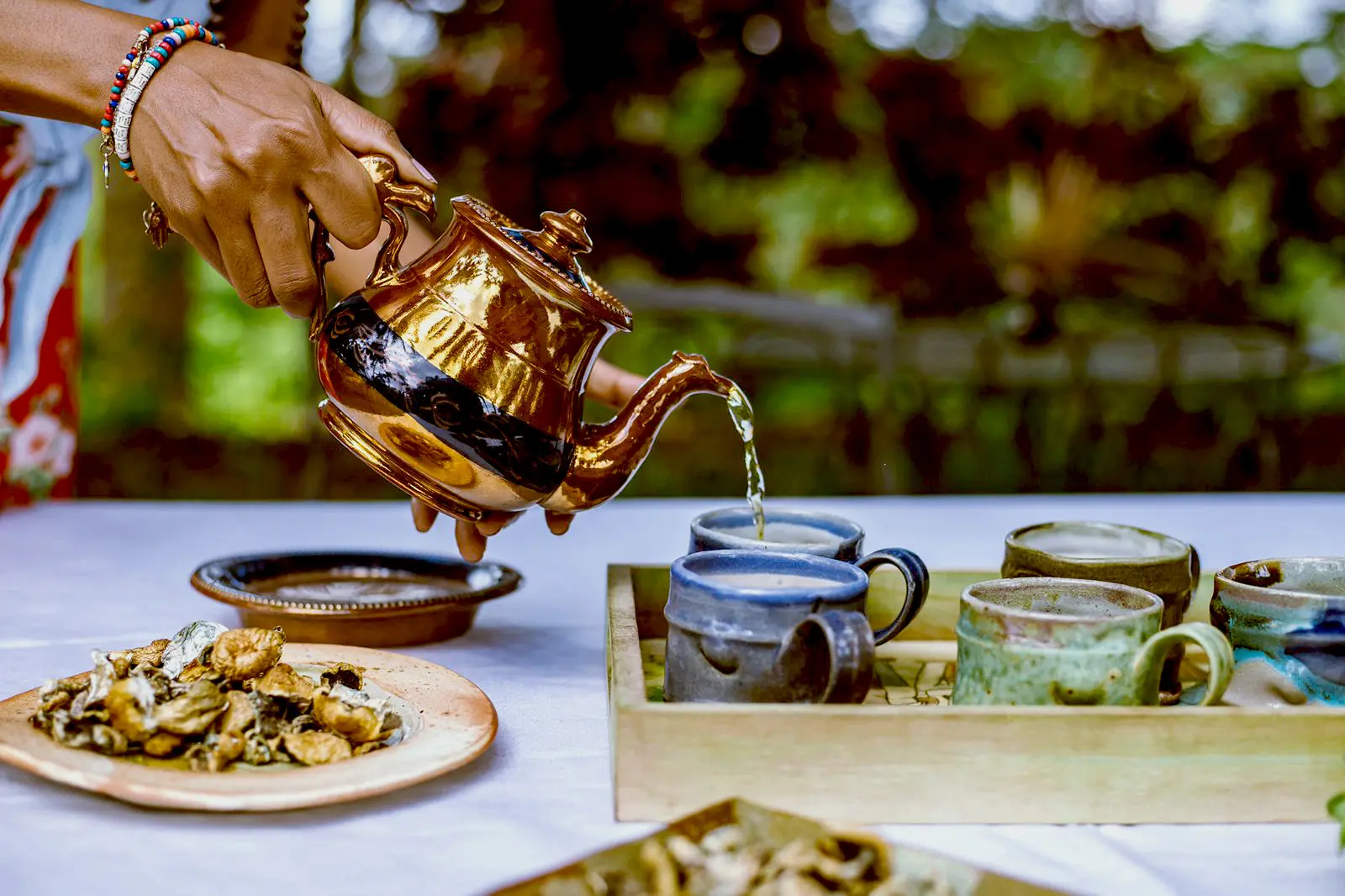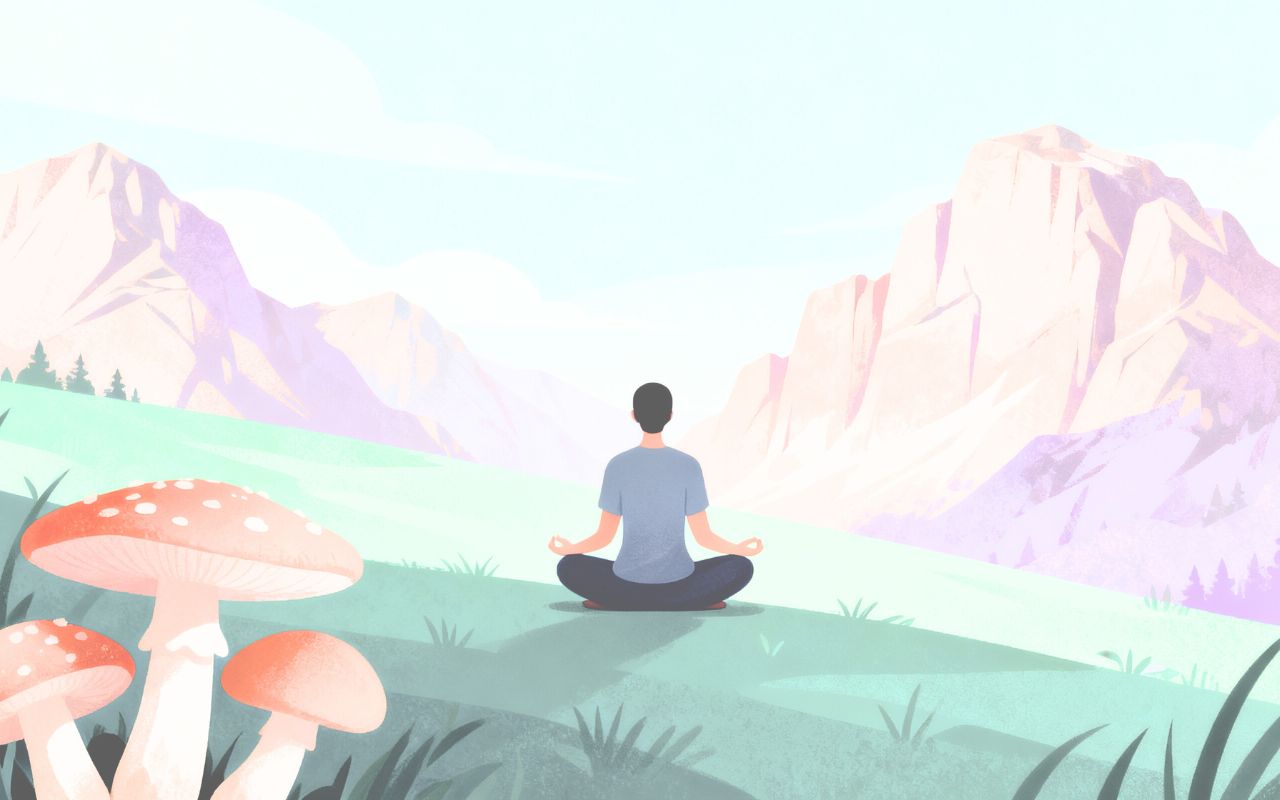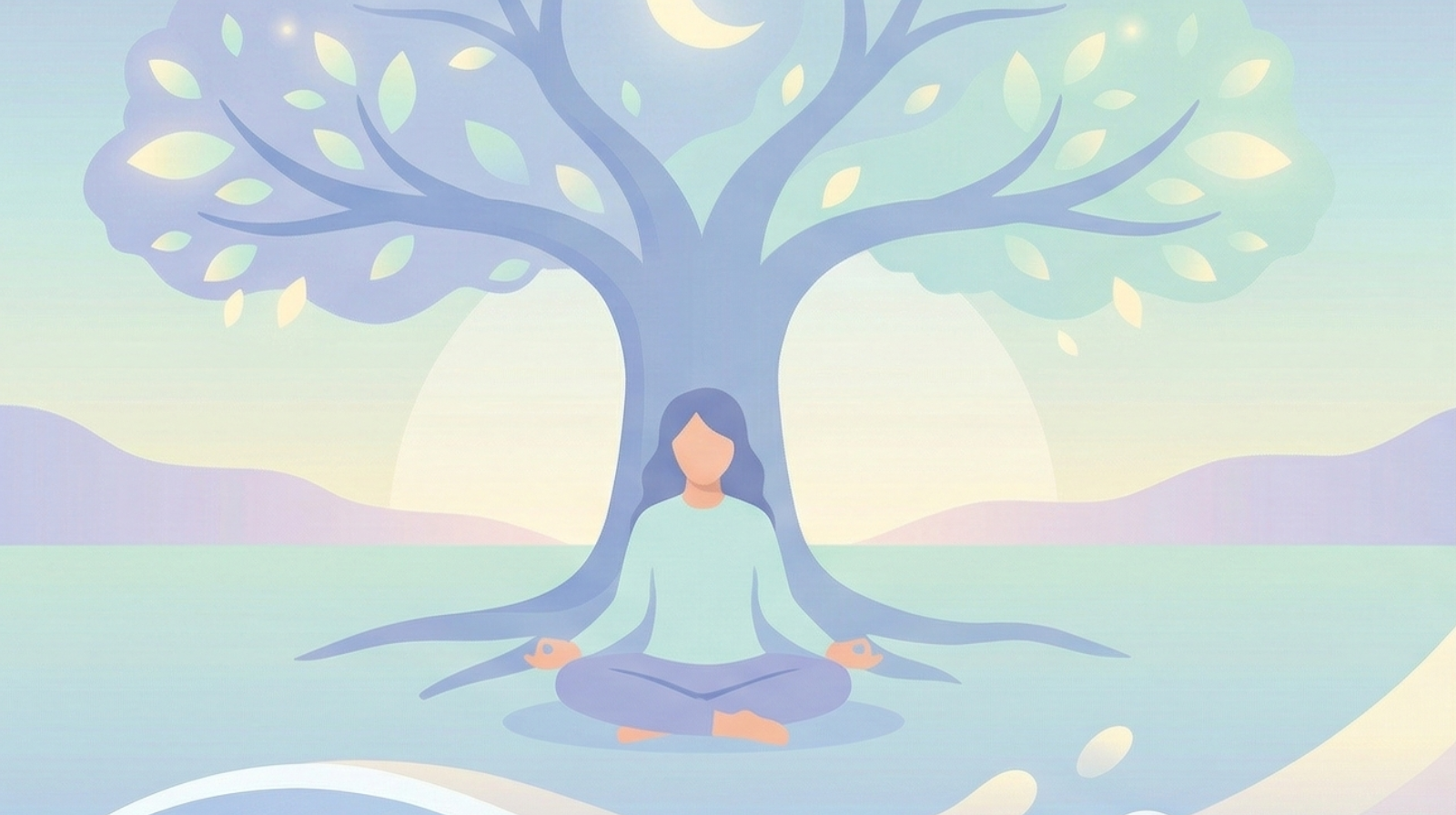
What Is a Psilocybin or Mushroom Ceremony?
A psilocybin mushroom ceremony or retreat involves the intentional consumption of a psychedelic fungus. Intentions around the psilocybin ceremony range from addressing emotional wounds and working on personal growth, to experiencing mystical connection and spiritual experience. Psychedelic mushrooms (also commonly called “magic mushrooms”) and their ceremonies are not a recent invention; they have a long and fascinating history.
The History of Mushroom Ceremonies
Many psychedelic compounds (DMT, LSD, Peyote) need to be processed to have psychoactive effects, but Psilocybin mushrooms can be eaten directly as they are found in nature. This led to their embrace by humans, which seems to have happened thousands of years ago. It wasn’t long before mushroom ceremonies became commonplace among cultures across the globe.
There’s evidence that mushroom rituals and the ceremonial use of psilocybin mushrooms dates back into ancient history as seen in Aztec mushroom stones. Prehistoric rock murals depicting mushrooms and plant medicines have been found around the Mediterranean—from Algeria to France and Spain. With the magic mushroom ceremony recorded in ancient artworks, we’re more able to understand how meaningful these psychedelic journeys were for a wide number of cultures.
Around 7,000 years ago, the people of the Tassili n’Ajjer plateau (present-day Algeria) created a cave painting known today as the Bee-Faced Mushroom Shaman, an image of a person with the face of a bee, clutching mushrooms in each hand [1]. Many believe the picture is a medicine person and the mushrooms are of the psilocybin variety. Similarly, 6,000 years ago, a mushroom mural was painted on the wall of a cave in modern-day Spain. But such art was not confined to Europe and Africa. People in Guatemala began carving stone mushroom sculptures as far back as 2,500 years ago, and 2,000 years ago in Mexico [2]. The mushroom ceremony has been celebrated by a number of ancient groups, helping to continue legitimizing the need for mushroom rituals in our present age.
Beyond Mushroom Stones
In Asia, the world’s oldest known spiritual texts may have been inspired by the visions experienced during mushroom ceremonies.
Even the gods themselves may have partaken in a mushroom ceremony. The opening lines of the Vedas and Upanishads, texts that form the basis of Hinduism, inform the reader that the gods routinely consumed a ritual drink called soma, which is described as having psychedelic properties. “We have drunk Soma and become immortal; we have attained the light, the Gods discovered.” [3]
These lines from the Rig Veda seem to highlight that whatever Soma was, it was a profoundly psychoactive mushroom. The soma plant was described as having no leaves, flowers, blossoms, or seeds; no roots, trunk, or branches. Based on these descriptions, famed psychedelic advocate Terence McKenna argued that the Soma drink was actually made from psychedelic plants or mushrooms [4]. If this is true, then it’s easy to assume that these early mushroom ceremonies helped form the basis of these ancient beliefs.
Mazatec Mushroom Ceremonies
While the sacraments of ancient India have been lost to time, ceremonial mushroom and plant medicines used in the Americas were still active when the Spanish arrived several hundred years ago. The Aztecs referred to the mushroom as teonanácatl, or the “flesh of the Gods.” It wasn’t long before this form of magic mushroom ceremony came under heavy scrutiny from Spanish colonizers.
From the Spanish mushroom perspective, such sacrilege could not stand, and the colonizers worked vehemently to suppress the practices. One culture, however, managed to preserve the tradition of mushroom ceremonies. Living in the mountains of Oaxaca, Mexico, the Mazatec people have successfully preserved their practice of traditional mushroom ceremonies, all the way up to the present day.
The Valeda, a Mazatec mushroom ceremony, usually takes place at night. A fresh mushrooms is eaten with honey and, traditionally, three cocoa beans [5]. Participants often start with approximately 2.5-3 grams of dried mushroom, followed by a second plate of roughly 2 grams.
The Mazatec mushroom ceremony takes place in darkness with the medicine person, the curandera or curandero, who sings and recites prayers, using the power of vocalization to hold the space. This approach to mushroom ceremonies is similar to many other indigenous traditions, including the Shipibo ayahuasca ceremony.
After the ceremony, participants integrate the experience by focusing on the emotions they felt during the mushroom ritual, and by talking about their experiences with other people. Some people posit that textile art, yoga, and other creative pursuits were originally designed to be a part of the psychedelic integration process.
Mushroom Ceremonies Come to the West
In recent years, research into the modern mushroom ceremony is largely influenced by a Mexican tradition and one woman in particular. María Sabina was a Mazatec curandera from the town of Huautla de Jiménez. She held Mazatec mushroom ceremonies working with psilocybin, which she called “Los Niños Santos” or “The Little Saints”.
In 1955, a married couple, both of whom were amateur mushroom mycologists, paid her a visit. One was an American—the banker and vice-president of J.P. Morgan & Co.—R. Gordon Wasson. The other was his wife, a Russian, Valentina, who worked as a pediatrician and scientist. Wasson convinced Maria Sabina to allow him to take part in the sacred ritual, becoming the first Westerner to undergo a Mazatec mushroom ceremony [6].
Until that point, magic mushroom ceremonies were typically used to locate missing people and items or to cure the sick. Wasson and Sabina went on to have a great impact on the spread of mushroom ceremonies and their potential benefits.
By the 1960s, many people in the West were taking mushrooms and other psychedelics for spiritual experiences. María Sabina noticed that “Before Wasson, nobody took the children simply to find God. They were always taken to cure the sick.” In this way, the mushroom ceremony continues to develop even today.
What Can I Expect From a Mushroom Ceremony or retreat?
At a dose of between 1 to 3 grams of dried cubensis mushrooms (approximately 5-15 grams of fresh truffles or 6-18 mg of psilocybin), unconscious psychological patterns can emerge, resulting in profound insights into life. The mushroom ceremony is capable of putting you more in touch with both the spiritual elements of life, as well as the physical. Memories can be re-experienced and emotional wounds from the past can be processed.
These experiences are more likely, however, if one has prepared to turn inwards beforehand. In the early stages, it’s common to see colorful geometric visions. As the experience of consciousness deepens throughout the mushroom ceremony, one may perceive associations between different memories, and contact is often made with deep unconscious preoccupations.
Ceremonial Psilocybin Mushrooms
At higher doses of ceremonial psilocybin mushrooms, mystical experiences of ego dissolution become more likely. These mushroom experiences typically involve the complete surrender of defense mechanisms, which means, naturally, that it’s crucial the ceremonies occur in a safe and supportive community setting.
When this happens, people can take down walls and move into a state of transcendent connection with a fundamental life force energy. These experiences also allow a person to experience profound connections with the spirit of other people. This is the power of taking part in a psilocybin ceremony as a group.
How Are The Ceremonies Handled at the Retreats?
At Beckley Retreats, participants are supported through every stage of the psilocybin ceremony. This mushroom ritual begins with a pre-ceremony preparation. Our mushroom retreat preparation consists of a 4-week virtual program in which participants have the opportunity to connect with the whole community of people with whom they will be sharing the group retreat. Participants also take part in guided activities and one-on-one support, and are given access to useful resources throughout the retreat program. Our retreat programming is designed to get each participant as comfortable and prepared as possible before you experience a single mushroom.
During the 5-night retreat, participants take part in two psilocybin ceremonies. The effects can be expected to last for 4-6 hours following consumption of the psilocybin mushrooms at the Jamaica retreats, or truffles at the Netherlands retreats. Participants are supported throughout their journeys by trained facilitators, who have developed inner resources to hold space and help everyone get the most out of the mushroom ceremonies.
Understanding the Beckley Program
Daily guided meditation classes allow participants to cultivate the ability to bring mindful awareness to whatever arises in the magic mushroom ceremony, a powerful skill for working through challenging material.
Guided breathwork is also used to promote relaxation, oxygenate the body, unearth emotions, and relieve stress and depression in preparation for the mushroom or psilocybin ceremony. Finally, restorative yoga allows participants to cultivate body-mind awareness for a deeply embodied processing of the ceremonies.
Following the retreat is the 6-week virtual integration program, consisting of daily practices, group sessions, workshops, and integration practices and techniques, as well as the opportunity to stay connected with the other participants from the group after your mushroom experience.
Are Mushroom Ceremonies Safe?
At Beckley Retreats, the safety of participants is our top concern. We place heavy emphasis on our participants’ physical, psychological, and emotional safety during their time on, before, and after retreat. Retreats are held at safe, secure, and spacious locations where our group is the sole occupant of the retreat space, and psilocybin mushrooms (Jamaica) or truffles (The Netherlands) are completely legal.
Our world-class team of facilitators has hundreds of years of combined experience in guiding psilocybin retreat and they bring together modern scientific knowledge and traditional wisdom and mushroom practices. There is always at least one facilitator for every four participants in the group, and we ensure participants are supported throughout the ceremonies. A minimum of one of these facilitators is a professionally licensed physician, psychologist, or psychotherapist.
Beckley Retreats has a thorough safety plan and risk management protocols in place. Even before the retreat begins, we take steps to ensure a smooth experience for participants by rigorously screening applicants for suitability. Access to medical care is available throughout, should it be needed. In Jamaica, for example, a medical doctor is on call 24/7. Urgent care facilities and hospitals are a 30-60 minute drive away from the retreat center. In the Netherlands, emergency medical care is available 24/7 with medical facilities within 45 minutes.
Experiencing the Mushroom Ceremony
Our mission is to facilitate the safest, most profoundly transformative experiences possible. The environment of integrity is what allows participants to let go and have the most beneficial experiences while attending mushroom ceremonies.
We’ve seen time and again that such retreats can lead to lasting positive change in participants’ lives. Our goal is to make psilocybin ceremonies widely available and in an environment of maximum professionalism and safety.
By joining us on one of our retreats, you can connect with a mushroom tradition of wisdom that stretches back thousands of years, spanning continents and cultures, with ceremonies, teachings, and mushroom rituals that have touched countless people’s lives and brought harmony to many generations of people. We look forward to seeing you at one of our retreats.
References:
[1] Algerian Cave Paintings Suggest Humans Did Magic Mushrooms 9,000 Years Ago, Open Culture https://www.openculture.com/2021/01/algerian-cave-paintings-suggest-humans-did-magic-mushrooms-9000-years-ago.html
[2] Lowy, B. (1971). New records of mushroom stones from Guatemala. Mycologia, 63(5), 983-993. https://www.jstor.org/stable/3757901
[3] Rig Veda; 8.82.25 https://www.sacred-texts.com/hin/rigveda/rv08082.htm
[4] Food of the Gods: The Search for the Original Tree of Knowledge: a Radical History of Plants, Drugs and Human Evolution by Terence McKenna (Rider, 6 May 1999)
[5] Consciousness Medicine: Indigenous Wisdom, Psychedelic Therapy, and the Path of Transformation: A Practitioner’s Guide by Francoise Bourzat (North Atlantic Books US, 25 June 2019)
[6] Life Magazine, May 13, 1957 – Seeking the Magic Mushroom by R. Gordon Wasson http://www.psychedelic-library.org/life.htm


